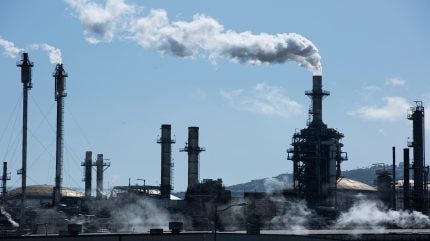
Global methane emissions from fossil fuel operations remain at elevated levels, according to the International Energy Agency’s (IEA) latest report.
The 2025 Global Methane Tracker report hinted at improvements in data collection including satellite monitoring.

Discover B2B Marketing That Performs
Combine business intelligence and editorial excellence to reach engaged professionals across 36 leading media platforms.
However, increasing production of oil, gas and coal continues to offset progress on emissions reduction.
The IEA estimates that the energy sector releases more than 120 million tonnes per annum (mtpa) of methane.
This figure exceeds what is often reported officially, although transparency is improving due to advances in detection.
A growing number of satellites – now more than 25 – are helping identify large leaks.

US Tariffs are shifting - will you react or anticipate?
Don’t let policy changes catch you off guard. Stay proactive with real-time data and expert analysis.
By GlobalDataThis year’s update introduces new tools and data including historical national emissions figures and insights from inactive fossil fuel sites.
Abandoned wells and mines were found to emit around eight million tonnes of methane last year. These sites, if considered as one source, would rank among the top global emitters.
Additionally, the report offers a public model for exploring methane reduction strategies in oil and gas.
Around 70% of emissions from the sector could be reduced using current technologies. In many cases, capturing methane can generate revenue through the sale of recovered gas.
Differences in methane intensity between companies and countries remain stark, with the most efficient performing up to 100-times better than the worst.
The IEA stresses the need to share knowledge and established practices. Reducing these gaps is viewed as essential to wider progress. Data from satellites showed an increase in major leak events in 2024.
The IEA estimates that stronger mitigation could have made an additional 100 billion cubic metres (bcm) of gas available to the market. This supply is roughly equal to Norway’s annual gas exports.
Flaring, another major source of waste, accounts for 150bcm of burned gas annually.
Most of this could be avoided, as it often results from routine operations. Reducing both flaring and methane emissions could also support energy security.
The IEA finds that fully applying current methane policies could limit future temperature rises by 0.1°C by mid-century.
This would have an effect similar to eliminating all carbon emissions from global heavy industry.



